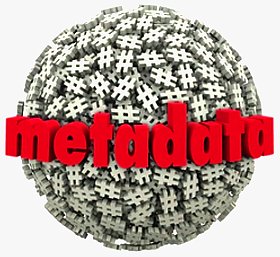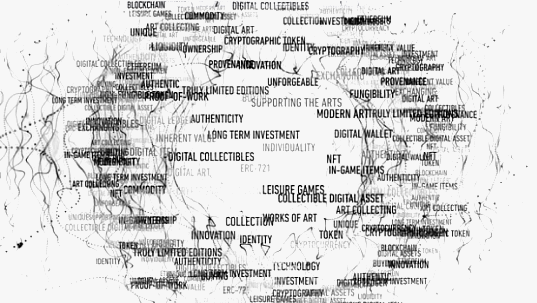Accredited InvestorsAltcoinAnatoli UnitskyAnti-Money Laundering (AML) In CryptoAPIArbitrageArtCoin TokenArticle DirectoryASICAuction Terminology GlossaryBasics of Stock Market InvestingBear MarketBest Crypto Payment Provider In the WorldBitcoinBlockchainBlockchain ConfirmationBlockchain Consensus MechanismBlockchain ForkBlockchain GlossaryBored Ape Yacht ClubBuild a Business That OutperformsBull MarketBuying SkyWay SharesByzantine Fault Tolerance (BFT) ExplainedCasascius CoinCentral Bank Digital Currency (CBDC)Centralized Crypto ExchangeCoinCoinsetCold WalletCollateralCommodity Futures Trading Commission (CFTC)Cross-Chain TechnologyCRUCrypto ExchangeCrypto GlossaryCrypto JokesCrypto Terms to KnowCrypto TickerCryptocurrencyCryptographyCryptojackingCryptounit BlockchainCryptounit GlossaryCryptounit ProgramdApp (Decentralized Application)Dead CoinDecentralized Exchange (DEX)Decentralized Finance (DeFi)Difference Between Bitcoin and EthereumDifferent Ways of Investing MoneyDigital CurrencyDistributed LedgerDo Your Own Research (DYOR)Dollar Cost Averaging (DCA)Dow Jones Industrial Average (DJIA)EncryptionERC-20ERC-721EthereumEvoScentFear Of Missing Out (FOMO)Fear, Uncertainty and Doubt (FUD)Fiat MoneyFNT Fintech CompanyGenesis BlockGlobal Unit PayGlossary of Banking TermsGlossary of Business TermsGlossary of Financial TermsHalvingHODLHot WalletHow Do I Start InvestingHow Rich is Satoshi Nakamoto?How to Create a BlockchainHow to Find Private InvestorsHow to Get Into FintechHow to Program Smart ContractsI Am Thrilled to Be a Part of This Global ProjectInitial Coin Offering (ICO)Initial Public Offering (IPO)Initial Token Offering (ITO)Innovation Basalt TechnologyInnovative Transportation TechnologiesInternational Bank Account Number (IBAN)Investing in Gold Mining StocksInvesting in Gold MiningJagerJoy of Missing Out (JOMO)Know Your Customer (KYC)LedgerLiquidity in CryptocurrencyMaker and Taker Fees in Crypto TradingMarket Capitalization (Market Cap)Meme CoinMetal Credit CardMetaMaskMillenials Now Have Access to Generational WealthMy Best Investment EverNew Digital EvolutionNFT GlossaryOff-Chain TransactionsOn-Chain TransactionsOpen Edition NFTPeer-to-Peer (P2P)Personal Loan GlossaryProbably the Best STO on the MarketProof of Stake (PoS)Real Estate Glossary of TermsReal Estate Investing GlossaryRebase TokenSecurities and Exchange Commission (SEC)Security Token ExchangesSecurity Token Offering (STO)Soulbound Decentralized Identities for Security TokensSoulbound ID Launch by Stobox Proves a SuccessSoulbound TokensStoboxStock Market GlossaryTestimonialsTether Platform and Token (USDT)UnitEx ExchangeUnitsky String TechnologiesUNTBUSDUValidatorWe Started Investing When We Were 25What are Blue Chip NFT?What are Blue Chip Stocks?What are Crypto Assets?What are Crypto Smart Contracts?What are CryptoPunks NFT?What are Digital Assets?What are Digital Collectibles?What are Gas Fees?What are Gas Wars?What are Hashmasks?What are Non Fungible Tokens?What are Non-Sufficient Funds (NSF)?What are Soulbound Tokens (SBT)?What are Stablecoins in Crypto?What are Transactions Per Second (TPS)?What are Utility NFTs?What are Utility Tokens?What Does Burning Crypto Mean?What Does Diamond Hands Mean?What Does Paper Hands Mean?What Does To The Moon Mean?What Does WAGMI Mean?What Happened to Satoshi Nakamoto?What is a 51% Attack?What is a Baby Boomer?What is a Backlink?What is a Banner?What is a Barcode?What is a Bid-Ask Spread in Crypto?What is a Block in Blockchain?What is a Block Reward?What is a Blockchain Address?What is a Blockchain Node?What is a Blockchain Oracle?What is a Blog?What is a Bond?What is a Bot?What is a Broker?What is a Business Accelerator?What is a Cash Cow?What is a Commercial Bank?What is a Commodity?What is a Con?What is a Credit?What is a Credit Limit?What is a Credit Rating?What is a Crypto Airdrop?What is a Crypto Bridge?What is a Crypto Scam?What is a Crypto Token?What is a Crypto Wallet?What is a Crypto Whale?What is a Crypto Winter?What is a Cryptocurrency Public Ledger?What is a Cryptocurrency Roadmap?What is a DAO?What is a Dark Pool?What is a Day Trader?What is a Dead Cat Bounce?What is a Default?What is a Derivative?What is a Digital Credit Card?What is a Fiscal Quarter?What is a Fungible Token?What is a Governance Token?What is a Grace Period?What is a Hard Fork?What is a Hot Wallet?What is a Hybrid Blockchain?What is a Hybrid PoW/PoS?What is a Joint Account?What is a Market Cap?What is a Merkle Tree in Blockchain?What is a Mining Farm?What is a Nonce? What is a PFP NFT?What is a POS System?What is a Prepaid Card?What is a Private Blockchain?What is a Private Key?What is a Public Blockchain?What is a Public Key?What is a Reserve Currency?What is a Ring Signature?What is a Routing Number?What is a Rug Pull in Crypto?What is a Safe Deposit Box?What is a Satoshi?What is a Security Token?What is a Seed Phrase?What is a Shitcoin?What is a Sidechain?What is a Soft Fork?What is a Spot Market?What is a State Bank?What is a SWIFT Code?What is a Tax Identification Number (TIN)?What is a Time Deposit?What is a Transaction Account?What is a Variable Interest Rate?What is a Virtual Assistant (VA)?What is a Virtual Card?What is a Virtual Currency?What is a Visa Card?What is a Whitelist in Crypto?What is a Whitepaper?What is Accounts Payable (AP)?What is AMA in Crypto?What is Amortization?What is an Accrual?What is an ACH Transfer?What is an Actuary?What is an Addendum?What is an Algorithm?What is an Angel Investor?What is an Annuity?What is an Asset?What is an ATM?What is an Atomic Swap?What is an Audit?What is an Avatar?What is an EIN?What is an Embargo?What is an Entrepreneur?What is an IDO (Initial Dex Offering)?What is an Interest Rate?What is an Internet cookie?What is an Investment Bank?What is an NFT Drop?What is an NFT Floor Price?What is an Ommer Block?What is an Orphan Block?What is an Outstanding Check?What is an Overdraft?What is Artificial Intelligence (AI)?What is B2B (Business-to-Business)?What is B2G (Business-to-Government)?What is Bartering?What is Bitcoin Dominance?What is Bitcoin Pizza Day?What is Blockchain Immutability?What is Blockchain Used For?What is BRICS?What is Business-to-Consumer (B2C)?What is C2C (Customer to Customer)?What is Capitalism?What is Catfishing?What is CFD Trading?What is Check Kiting?What is Cloud Mining?What is Communism?What is Content Marketing?What is Decentralization in Blockchain?What is DeFi in Crypto?What is Delisting?What is Depreciation?What is Digital Marketing?What is Diversification?What is Double Spending?What is Dumb Money?What is Dumping?What is Earnings Per Share (EPS)?What is Economics?What is Email Marketing?What is Equity?What is Etherscan?What is Fintech?What is Foreign currency?What is Forex?What is Fundamental Analysis (FA)?What is GameFi?What is Generative Art NFT?What is Gwei?What is Hard Currency?What is Hash Rate?What is Hashing in Blockchain?What is Inflation?What is Initial Game Offering (IGO)?What is Interest?What is Interest Income?What is Mainnet?What is Mastercard?What is Metaverse in Crypto?What is Mining in Cryptocurrency?What is Minting NFT?What is Mobile Banking?What is Money Laundering?What is NFT Alpha?What is NFT Metadata?What is NFT Rarity?What is NGMI Meaning?What is Nominal Interest Rate?What is Online Banking?What is Open-End Credit?What is OpenSea NFT Marketplace?What is Personal Identification Number (PIN)?What is Play-to-Earn?What is Polygon?What is Proof of Authority (PoA)?What is Proof of Work (PoW)?What is Public Key Cryptography?What is Pump and Dump?What is Quantum Computing?What is Refinancing?What is Retail Banking?What is Ripple?What is Sharding?What is Slippage in Crypto?What is Smart Money?What is Solvency?What is Soulbound ID?What is SSL?What is Staking in Cryptocurrency?What is Technical Analysis (TA)?What is Testnet?What is the Ask Price?What is the Better Business Bureau (BBB)?What is the Bid Price?What is the Dark Web?What is the InterPlanetary File System (IPFS)?What is the Gold Standard?What is the Lightning Network?What is the Prime Rate?What is the Sandbox?What is the Secondary Market?What is the World Bank?What is Tier 1 Capital?What is Tokenomics?What is TRC-20?What is Universal Banking?What is Unspent Transaction Output (UTXO)?What is Usury?What is Volatility in Crypto?What is Wash Trading?What is Web3?What is Whisper?What is XRP?What is Zero-Knowledge Proof (ZKP)?Who is Beeple?Who is Satoshi Nakamoto?Who is Vitalik Buterin?Why Tokenization is a Safe HavenWhy You Should Try Your Hand at Trading
What is NFT Metadata?
- Home
- NFT Glossary
- What is NFT Metadata?
NFT metadata, although not yet a buzzword in the industry, plays a critical role in the technology.

However, it remains a mystery to many in the community. Without metadata, minting a simple JPEG NFT could cost hundreds of thousands of dollars in gas fees alone, as the entire information about the NFT is stored on the blockchain.
What is NFT Metadata?
Metadata refers to the data that constitutes the content of a specific NFT. In the case of a typical profile picture (PFP) NFT, metadata generally comprises details such as the name, description, traits, link to the hosted image, and other relevant information. These days, NFT metadata is commonly specified in JavaScript Object Notation (JSON) format.
NFT metadata is essential because it enables most of an NFT's details to be stored off-chain. When users mint, purchase, or sell NFTs on marketplaces like OpenSea, only limited information such as the token ID and contract address are recorded on the blockchain. The rest of the information is usually stored on the InterPlanetary File System (IPFS), which is a distributed peer-to-peer file sharing network. Some NFT projects, however, store their metadata on centralized servers as well. Therefore, creators must remember to freeze their metadata to ensure that it does not change, even if it is stored off-chain.
NFT Metadata Storage: On-Chain vs Off-Chain
When it comes to storing the data that makes up your NFT, there are two options available: on-chain and off-chain storage.
On-chain storage involves keeping the entire NFT, including its image and metadata, on the blockchain. While this ensures complete verification of the digital asset, it can be expensive for creators or projects due to the large amount of data contained in image files like JPEGs. As a result, most creators and project teams opt for off-chain storage.
Off-chain storage means that part or all of the NFT exists outside the blockchain. Some creators may choose to store their NFTs on centralized storage servers like AWS or Google Drive, but the majority use decentralized servers like the InterPlanetary File System (IPFS), a distributed P2P file sharing network. The use of IPFS provides better security and reduces the risk of exposure to server issues since files are secured across multiple nodes.
NFT Metadata Standards
Standardizing NFT metadata involves the development of a common set of rules and guidelines that ensure consistency and interoperability between different NFT marketplaces and platforms. These standards provide clarity and help to ensure that NFT metadata is interpreted correctly, regardless of the platform or application being used.
There are several NFT metadata standards currently in use, including ERC-721 and ERC-1155. ERC-721 is the most commonly used NFT standard and was developed by Ethereum. It includes a set of predefined fields that must be included in the metadata, such as the token ID, name, and symbol. ERC-1155, on the other hand, is a more flexible standard that can be used for both fungible and non-fungible tokens.
In addition to these standards, there are also several emerging standards, such as the OpenSea Metadata Standard and the W3C Verifiable Credentials Data Model. These emerging standards are focused on improving the functionality of NFTs and making them more secure and reliable.
The development of NFT metadata standards is critical to the long-term success of NFTs. Without standardization, there is a risk of fragmentation and confusion, which could lead to a loss of value and trust in NFTs as an asset class. Standardization provides clarity, promotes interoperability, and helps to establish NFTs as a legitimate and valuable asset class.
How Can You Find an NFT’s Metadata?
If you're interested in purchasing or selling an NFT, you'll need to understand how to find the token's metadata. NFT metadata is an essential component of the token and provides critical information about the asset and its ownership.
Step 1: Identify the NFT contract address - The first step in finding an NFT's metadata is to identify the contract address of the NFT. This is typically provided by the NFT marketplace or platform where the token is listed. The contract address is a unique identifier that distinguishes the NFT from other tokens on the blockchain.
Step 2: Access the NFT contract on a blockchain explorer - Once you have identified the contract address of the NFT, you can access the contract on a blockchain explorer. A blockchain explorer is a tool that allows you to view information about transactions and blocks on the blockchain. There are several blockchain explorers available, such as Etherscan and BscScan, which are commonly used for Ethereum and Binance Smart Chain, respectively.
Step 3: View the NFT's metadata - Once you have accessed the NFT contract on the blockchain explorer, you can view the token's metadata. The metadata is typically stored in a JSON file, which can be accessed by clicking on the "TokenURI" field in the contract information. The JSON file contains information such as the name of the token, the creator's name, the date of creation, and other relevant details about the asset.
Step 4: Interpret the metadata - After accessing the JSON file, you can interpret the metadata to gain a better understanding of the NFT's value and authenticity. The metadata can provide information about the asset's provenance, ownership history, and even the current owner of the token.
How To Check Your NFT’s Metadata?
Inaccurate metadata can lead to confusion among buyers, and it can potentially affect the value of your NFT negatively. Therefore, now we’ll discuss how to check your NFT’s metadata and ensure its accuracy.
Step 1: Locate Your NFT’s Metadata - Before you can check your NFT’s metadata, you need to know where it’s stored. As mentioned in the previous chapter, most NFT projects store their metadata off-chain on a decentralized server like the InterPlanetary File System (IPFS). To access the metadata, you’ll need the IPFS hash, which is a unique identifier that points to the location of the metadata on the IPFS network.
Step 2: Verify the Metadata - Once you have the IPFS hash, you can use an IPFS explorer to access your NFT’s metadata. There are several IPFS explorers available online, such as IPFS.io and Infura.io. These explorers allow you to enter the IPFS hash and retrieve the metadata of your NFT.
When you have the metadata, make sure to verify that it’s accurate. Check the name, description, and attributes to ensure they match the information you provided when you minted or purchased the NFT. If you notice any errors, contact the project team or platform where you bought the NFT to request a correction.
Step 3: Protect Your NFT’s Metadata - Once you’ve verified your NFT’s metadata, it’s crucial to protect it from unauthorized changes. As mentioned in the previous chapter, metadata can be frozen to prevent any changes from being made to it. Freezing metadata means that the data is permanently attached to the NFT, and any attempt to modify it will result in the NFT becoming invalid.
Practical Uses of NFT Metadata
NFT metadata has a wide range of applications. It can serve as an addendum to tokens by including additional information, such as a receipt or serial number. This feature makes transactions smoother and more efficient. Additionally, metadata can be used to provide supplemental information about the asset, such as its current location, price, or image.
Another use case for NFT metadata is storing state data off of the blockchain. This feature is particularly useful for computers with limited bandwidth or storage capacity. The metadata is transmitted to centralized servers and can be accessed on the blockchain through an encrypted channel whenever required. This allows for more efficient and streamlined operations.
The Bottom Line
NFT metadata is a critical component of Non-Fungible Tokens, providing essential information about the asset and its ownership. Standardizing NFT metadata is crucial to ensuring consistency and interoperability between different NFT marketplaces and platforms.
With the increasing popularity of NFTs, understanding how to find and interpret their metadata is essential for anyone interested in this new and exciting asset class. As the technology continues to evolve, NFT metadata will play an increasingly important role in establishing NFTs as a legitimate and valuable asset class in the world of digital ownership and collecting.
Related Articles

What is a Nonce?
To ensure the security of a blockchain, data from previous blocks are hashed and encrypted into a block header that contains various metadata, including the nonce.

What Are Soulbound Tokens (SBT)?
Like regular NFTs, SBTs live on the blockchain and have their own identification code and metadata. The concept of SBTs is derived from...

What are Digital Assets?
Digital assets can take different forms, including cryptocurrencies, NFTs, digital art, e-books, manuscripts, logos, social media accounts, documents, metadata, gaming accounts, and even...

What are Digital Collectibles?
However, the art and metadata are not stored on the blockchain but hosted externally on a server. Although proof of ownership is still...
- Home
- NFT Glossary
- What is NFT Metadata?